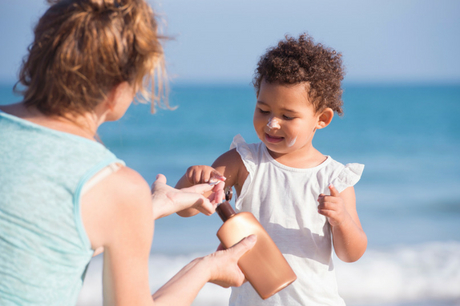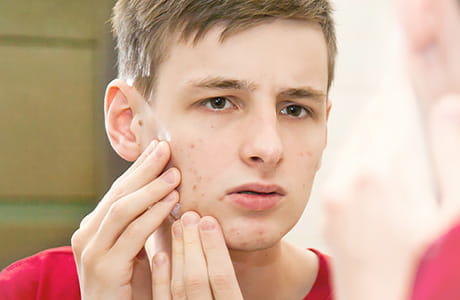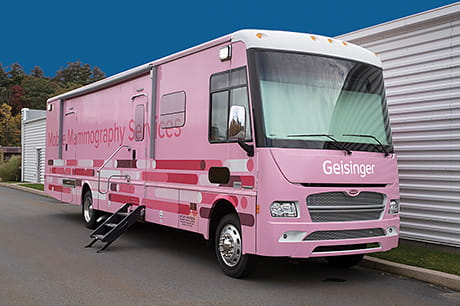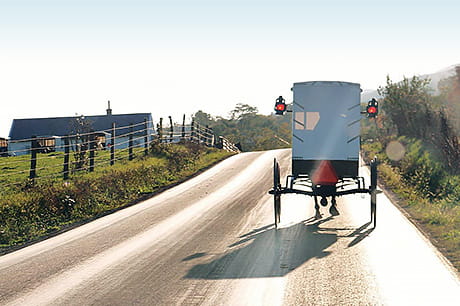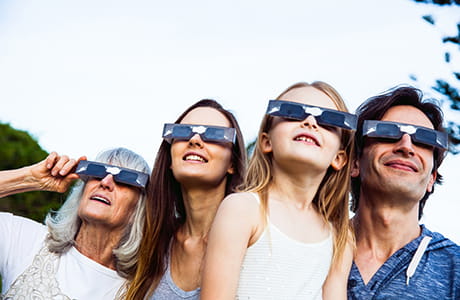SPF what? Your guide to decoding sunscreen.
From broad-spectrum protection to water-resistant, one family medicine doctor shines a light on what sunscreen labels mean and how to find the right one.
If you’re planning to spend time outdoors, you may bring along a few essentials, like a hat or sunglasses. But before you head out, there’s one thing you should never forget — sunscreen. Whether it comes in a can or a tube, proper sun protection can help you avoid a sunburn.
“Getting a sunburn, even a minor one, damages your skin,” says Elena Ackah, MD, a family medicine doctor at Geisinger’s Lock Haven clinic. “The best way to protect yourself from the sun’s rays is to wear sunscreen.”
The sun produces two types of rays — ultraviolet A (UVA) and ultraviolet B (UVB). UVB rays cause sunburn, while UVA rays lead to deeper skin damage over time, like wrinkles, age spots and skin cancer.
SPF explained
All sunscreen includes a sun protection factor (SPF) rating. This number refers to how well it protects against the UVB rays that cause skin to burn.
SPF describes how long it would take your skin to burn with sunscreen instead of without it. For example, if it would take your bare skin 10 minutes to burn, SPF 15 should increase that by 15 times. That means it will prevent sunburn for up to 150 minutes.
So, how much SPF do you need? “That’s the tricky part,” Dr. Ackah says. “The level of SPF you need varies based on how long you’ll be out in the sun. It also depends on your personal history.”
You may need a higher SPF if you:
- Have sensitive skin
- Have a family history of skin cancer
- Are fair-skinned
Choosing the proper sun protection
Not all sunblock is created equal. To find the best sunscreen for you and your family, start with the label. Look for products that say:
Broad-spectrum protection: All sunscreen protects against UVB rays. But not all sunscreen protects against UVA rays. Broad-spectrum (also called multi-spectrum or UVA/UVB) protection means it guards against both types.
Water-resistant: If you plan to be in the water or just sweating a lot, look for water-resistant sunblock. Note, though, that water-resistant doesn’t mean waterproof. “If you’re going swimming, reapply when you get out of the water,” says Dr. Ackah.
SPF 30: Sunscreen with SPF 30 filters out 97% of UVB rays. It may be tempting to look for the highest SPF rating. However, nothing will give you 100% protection, no matter how high the SPF. “SPF 30 is all the average person needs,” Dr. Ackah says.
Protecting your skin
Before you head outside, here are a few ways to shield your skin from sun damage and dodge a sunburn.
- Avoid peak hours. The sun’s rays are strongest between 10 a.m. and 4 p.m. If you must be outside then, stay in the shade as much as possible.
- Cover up. Wear clothes that completely cover your arms and legs. Look for sun-protective clothing if possible. For more protection, add a hat and sunglasses.
- Plan ahead. Put on sunscreen about 30 minutes before any sun exposure.
- Apply liberally. Use a 1-ounce dollop (approximately the size of a golf ball) to cover your arms, legs, neck and face. If you’re using a spray-on variety, spray each body part for about 5 seconds. For maximum protection, reapply every 2 hours.
- Remember the sensitive spots. Apply sunscreen to your ears, feet, and lips — these places can all get burned, too.
- Don’t forget about sunscreen once summer is over. Remember to use sunscreen all year — not just in the summer months. “ Because UV rays reflect off sand, snow and water, it’s important to use sunscreen year-round,” says Dr. Ackah.
(And on the topic of keeping safe in the sun, stay hydrated.While it won’t stave off a sunburn, drinking enough fluids helps you avoid heat exhaustion or heat stroke.)
Regardless of brand, scent, or application type, keep sunblock top of mind. “What sunscreen to use is a personal choice,” Dr. Ackah says. “The most important thing is to use one.”
Next steps:
Learn about dermatology at Geisinger
Here's how to treat a sunburn
